
I’ve noticed it for the last couple of show cycles. I call it the restless Zombie effect.
I’ve watched attendees shuffle from room to room searching—consciously or unconsciously—for the messiah moment when someone will get up onstage and say “Publishing—I HAVE THE ANSWER! I have seen the future and I know how to [save your business/fix the model/predict the behavior of customers]!”
When I squint my eyes I imagine a slightly more animated version of Dawn of the Dead, only set in a convention center with endlessly repeating carpet. George Romero, are you listening?
It doesn’t matter if it’s BEA, SXSW, O’Reilly’s Tool of Change, London, Frankfurt, or wherever. (Although I will put in a plug for the diminutive BISG Making Information Pay Conference, where I got more actionable intelligence on the future of publishing in four hours than at those other shows combined. Way to go guys.)
To be sure, we’re seeing some exciting things. Twitter feeds full of interesting ideas and smart insights. Great consumer information like what’s coming out of Bowker’s PubTrack service. New experiments in formats like Vook and Blio, and smart catalog projects like Above the Treeline’s Edelweiss. Direct to Digital publishing and promotion. Fun new aps like Readeo, A Story Before Bed, or Iceberg Kids, and new social/publishing hybrids like the forthcoming Figment.com. Well-done extensions of book content into the digital universe like Scholastic’s 39 Clues, and Tony DiTerlizzi’s new Wondla-vision over at S&S. And let’s not forget the much-heralded arrival [insert incredibly brainy angels singing] of the iPad.
That’s all great. But like birds on a hippo, all these experiments are riding on the back of an industry poised on the edge, and it remains to be seen if we wind up with a fitter hippo or a Webkinz by the time we’re done.

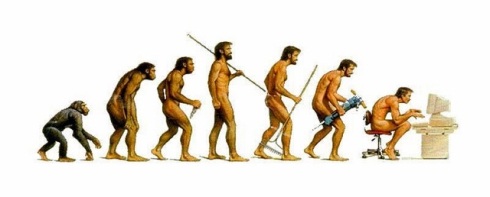
More like evolution than revolution
I don’t think there’s necessarily going to be a messiah moment.
Or, if there is one, it won’t be coming from the places we usually watch for the simple fact that shifting the entire publishing industry uniformly will be impossible. One may turn a ship, but one does not turn an ocean.
Furthermore some of the most powerful entities in the current system will be the least able to make change. Multinational corporations cannot evolve as quickly as small, nimble players or savvy individuals, and this industry is made up of lots more of those last two groups. Change will come from the wings.
Some people have advocated blowing it all up. I don’t think that’s a valid supposition, if for no other reason than the fact there is real operational value in the publishing chain, and lots of quality people doing great work. The problem is they’re doing it vertically (manufacturing model) at a time when they need to be doing it horizontally (information model).
Here’s what I think.
I think we’re going to see another five to ten years of remarkable change in the publishing industry. I think the changes are going to involve reorganization into a more direct way of doing business. I’m not sure on the matter of whether we’ll end up with a smaller Hippo or a bigger Webkinz, but here’s what I know is inevitable:
 Flattened communication among readers, writers, and the publishing filter
Flattened communication among readers, writers, and the publishing filter
 This basically means creating a situation where Authors, Readers, and Publishers are in a conversation, rather than a broadcast relationship. Publishers will have to adjust to the reality that they cannot control their author’s relationship with the audience, and so they must focus instead on what they do best–acquiring and publishing great material. Marketing and publicity will now be a partnership with more power (and responsibility) resting on the Author.
This basically means creating a situation where Authors, Readers, and Publishers are in a conversation, rather than a broadcast relationship. Publishers will have to adjust to the reality that they cannot control their author’s relationship with the audience, and so they must focus instead on what they do best–acquiring and publishing great material. Marketing and publicity will now be a partnership with more power (and responsibility) resting on the Author.
 The shift to a more interdisciplinary Authorship
The shift to a more interdisciplinary Authorship
 Following on from the previous point, successful authors will need to develop a new sophistication when dealing with marketing and promotion. This does not mean that the author’s primary job description is no longer writing, but it does mean that a successful author will also have to understand the core principals of planning their own marketing in the Web 3.0 environment. These include understanding how to use social networks, how to understand and engage their audience in conversation, and how to manage their attention to get their writing done. It also might mean knowing how to hire and manage a good publicist.
Following on from the previous point, successful authors will need to develop a new sophistication when dealing with marketing and promotion. This does not mean that the author’s primary job description is no longer writing, but it does mean that a successful author will also have to understand the core principals of planning their own marketing in the Web 3.0 environment. These include understanding how to use social networks, how to understand and engage their audience in conversation, and how to manage their attention to get their writing done. It also might mean knowing how to hire and manage a good publicist.
 The growth of independent Publicists as a category
The growth of independent Publicists as a category
 If someone were to ask me what I thought the growth jobs were in publishing, Independent Publicists would be in the top three (along with good editors conversant in XTML, and people who can teach Web 3.0 business classes for authors.) This new marketing landscape is going to need a new generation of savvy publicists who can work to craft a highly personal brand on behalf of their Author clients. We’re not just talking about arranging appearances, but tweeting, posting, and answering e-mail in an authentic way. These IP’s will probably specialize in the fine grain of particular genres or market niches. Maybe we’ll see the rise of publicity collectives among authors that serve a particular market? Interesting idea.
If someone were to ask me what I thought the growth jobs were in publishing, Independent Publicists would be in the top three (along with good editors conversant in XTML, and people who can teach Web 3.0 business classes for authors.) This new marketing landscape is going to need a new generation of savvy publicists who can work to craft a highly personal brand on behalf of their Author clients. We’re not just talking about arranging appearances, but tweeting, posting, and answering e-mail in an authentic way. These IP’s will probably specialize in the fine grain of particular genres or market niches. Maybe we’ll see the rise of publicity collectives among authors that serve a particular market? Interesting idea.
 More attention paid to how consumers behave and what they think
More attention paid to how consumers behave and what they think
 Once upon a time, publishers thought of their primary customers as bookstores. The literary directive was for them to acquire interesting and saleable material, publish it, and get it into stores. Where it went from there was mostly a matter of numbers, not consumer intelligence. They didn’t really need to know what a reader in Topeka thought about their books—only that they bought one.
Once upon a time, publishers thought of their primary customers as bookstores. The literary directive was for them to acquire interesting and saleable material, publish it, and get it into stores. Where it went from there was mostly a matter of numbers, not consumer intelligence. They didn’t really need to know what a reader in Topeka thought about their books—only that they bought one.
Not anymore. With the traditional distribution system breaking down, publishers are waking up to the fact that the END CONSUMER is actually their customer, and that the consumer has increasing power over the entire retail model but they’ve got a problem. They don’t have relationships with their end consumers—the retailers do.
And with the aggregation of 90% of the retail marketplace into a handful of really big players, the retailers have them over a barrel. If they want to know their consumer, they’ve got three choices:
a) Pay for detailed consumer data (expensive)
b) Direct retail to consumers through their own sites (ineffective, disorganized)
c) Guess based on sales figures (one step above reading tea leaves)
In the future this will change. Publishers and authors will find a more direct route to the audience, and the healthiest solution will be one where everyone can have an honest, two-way conversation. Publishers and authors are already starting to lose patience with entities like Amazon who hold the publishers hostage for a hefty price. No one really wins in that situation, least of all readers.
 A reader (but not necessarily a living wage) for every book
A reader (but not necessarily a living wage) for every book
 At the most recent Book Expo I was having a chat with the inimitable Mike Shatzkin, and the subject of over-publishing came up. I’ve felt that the industry has been over-publishing for some time. He disagrees. He points out that the same claim was being made 40 years ago, when the annual output was 10,000 books instead of 288,000. He argues that the Long Tail phenomenon of the internet now means that there is an audience for just about every book, but it may not be big, and it may not be profitable.
At the most recent Book Expo I was having a chat with the inimitable Mike Shatzkin, and the subject of over-publishing came up. I’ve felt that the industry has been over-publishing for some time. He disagrees. He points out that the same claim was being made 40 years ago, when the annual output was 10,000 books instead of 288,000. He argues that the Long Tail phenomenon of the internet now means that there is an audience for just about every book, but it may not be big, and it may not be profitable.
I think there’s truth to this idea. Bowker reported that last year more than 700,000 ISBNs were sold to non-traditional publishers and individuals. Each one of those books will have a reader, even if it’s just the author’s mom, but the percentage of authors who make their living on writing will not increase appreciably.
What will distinguish commercially successful books will be professional editorial and marketing.
Editors and publishers as curators will still be important in the future which is good news for all.
 The organization of the industry through a neutral consumer gateway
The organization of the industry through a neutral consumer gateway
 In the late 90’s publishing lion Jason Epstein tried to organize a publisher consortium to sell and distribute books through a central portal. He chronicled his failure in his delightful 2001 memoir Book Business: Past, Present, and Future. Had he succeeded he would have given Amazon a run for their money—Amazon would not be dictating such destructive pricing concessions now, and publishers would have shifted their profitability considerably.
In the late 90’s publishing lion Jason Epstein tried to organize a publisher consortium to sell and distribute books through a central portal. He chronicled his failure in his delightful 2001 memoir Book Business: Past, Present, and Future. Had he succeeded he would have given Amazon a run for their money—Amazon would not be dictating such destructive pricing concessions now, and publishers would have shifted their profitability considerably.
Unfortunately, he was defeated by all of the competing concerns of the different publishers who couldn’t see that far ahead. Jason saw the writing on the wall but he was about a decade too early in asking for the hearts and minds of his fellow publishers.
Well, here we are a decade later, and everyone’s hearts and minds are ready for the taking. It’s only a matter of time before Jason’s vision comes to pass. It’s too late for publishers to do it, because now they would be accused of racketeering. Amazon is not the neutral gateway I’m talking about either.
To be fair, no one in the business of selling goods can create what Jason Epstein envisioned. Publishers and retailers must serve their own interests first; they can never be neutral enough. Whatever emerges will need to connect readers, authors, and publishers through a central platform, and put the reader/consumer at the center of the equation. Not sell them—empower them. Excite them. Serve them.
The emergence of such an organizing platform has the potential to create the flattening and realignment the industry needs to move forward. After all, hearts and minds don’t just lie out there forever before someone comes calling.
So I ask you who’s going to do it? We better start watching the wings.






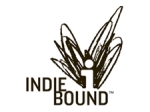
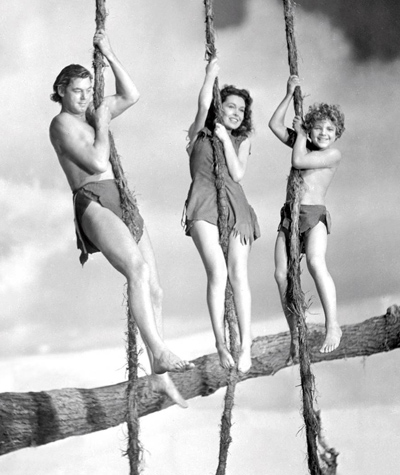





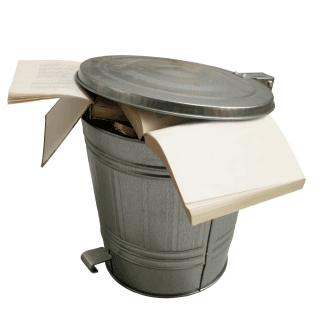

 By and large, this generation loves its books, and will be much more reluctant adopters of the e-book. Some members of this group will never embrace electronic technology at all. By and large this group is economically better off than the generation before them, and they have a higher degree of education than previous generations.
By and large, this generation loves its books, and will be much more reluctant adopters of the e-book. Some members of this group will never embrace electronic technology at all. By and large this group is economically better off than the generation before them, and they have a higher degree of education than previous generations. They read books. They own books. They also own computers, blackberries, and can get around the wired world.
They read books. They own books. They also own computers, blackberries, and can get around the wired world. This reader isn’t going to buy a
This reader isn’t going to buy a 


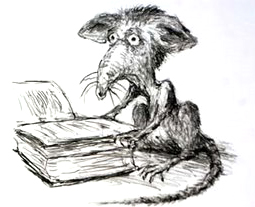
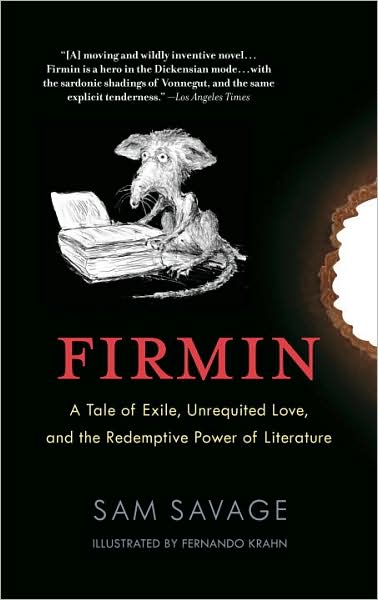

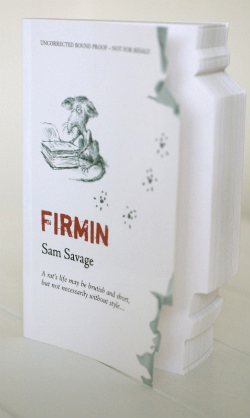


OBVIOUS WATCH: Preparing Kids for the Digital Future with Great Books
March 23, 2010 in Eye on the Industry, General Comments | 17 comments
I don’t know if you caught it, but the lead article in today’s Publishing Perspectives is titled: Vitamins 2.0: How Children’s Books Can Change the World in a Digital Age.
The gist: give children beautiful books full of beautiful imagery–rather than digital bells and whistles– and they’ll be better prepared for managing the “high-stimulus” digital future. And start early. The earlier the better.
My reaction: Of course. What took you so long ?
The idea of exposing children to great books isn’t new. In fact, the idea that “great books build great minds” is at the foundation of most progressive literacy initiatives of the last 50 years. I appreciate the new emphasis on the “visual” aspect, but I think it’s just that the mainstream may be waking up to what librarians, teachers, authors, and children’s book publishers have known all along.
And I also believe we’ve got a bumper crop of amazing artists right now who are pushing the boundaries of the children’s book artform. Mo Willems, Emily Gravett, Lane Smith, Brian Selznick, Adam Rex, Kevin Henkes, Melissa Sweet, Peter Brown, Antoinette Portis, Loren Long, Shaun Tan, Matthew Reinhart, Peter Reynolds, Bob Shea… I could go on and on.
I don’t think it’s that books need to get flashier or more artistic, and in fact, adding too many bells and whistles can actually get in the way of developing great habits of mind through reading. Just adding more pictures doesn’t add more meaning. It’s hard to imagine how to improve on the bedtime experience of Goodnight Moon, for instance.
Here’s what we need to change: adults need to get better at understanding and encouraging active engagement with media. In general we tend to lack understanding of exactly how sophisticated a learning tool a great children’s book can be. Asking questions about the story, looking for details in the illustrations, anticipating what might happen next–-these kinds of activities create great analytical skills and an empowered reader.
This kind of reader will hopefully go on to ask better questions of all media, evaluate the quality of information, and make thoughtful decisions about what is worthy of their attention. THAT’S a 21st Literacy Skill, not multi-tasking per se.
How many adults do you see wrestling with that one when they are juggling a cell and driving? I’d say they haven’t mastered the literacy of Attention themselves, so how will they teach it to their children? Multi-tasking without the ability to also mindfully focus is just culturally-generated ADD. The successful thinker of the future needs to be able to do both.
What we want from a new crop of children’s books are great stories, and nuanced artwork that engages the imagination. Sometimes this means restraint as opposed to more visuals, so the message is clearer.
If you want to see a BRILLIANT example of this, check out Polly Dunbar’s recent series of Tilly and Friends Books for Candlewick Press. They are so visually rich, and so elegantly spare, they are masterful examples of powerful storytelling for young readers. They are pitch perfect at capturing the zeitgeist of a toddler, and they have some great ideas to teach.
As for older readers, I think there are great opportunities to enhance books with multimedia features like online content, games, and related video, but here’s the catch: these elements should be about inspiring the reader to immerse themselves further, to follow their curiosity, to expand their knowledge, or to participate with others in a community around a book.
They shouldn’t just be there because publishers and developers think kids need the “cool-factor.” Kids are amazingly sophisticated these days, and they don’t swallow every hook, line, and sinker–especially if it doesn’t have deeper meaning.
Although I’m very happy to see kids books getting this kind of coverage, I think this article misses the point. It’s not enough to say “books prepare kids for a digital future.”
I’d argue that great children’s books and a rich experience of visual storytelling prepare kids for every future, digital and otherwise. They help kids build all the skills they will need for every eventuality: Attention, Empathy, Creativity, Imagination, Writing, Storytelling, Self-Awareness, Logic, Collaboration, Community, and Critical Thinking. It’s hard to beat that, and I think it’s amazing that the larger publishing community is just getting around to discussing it.